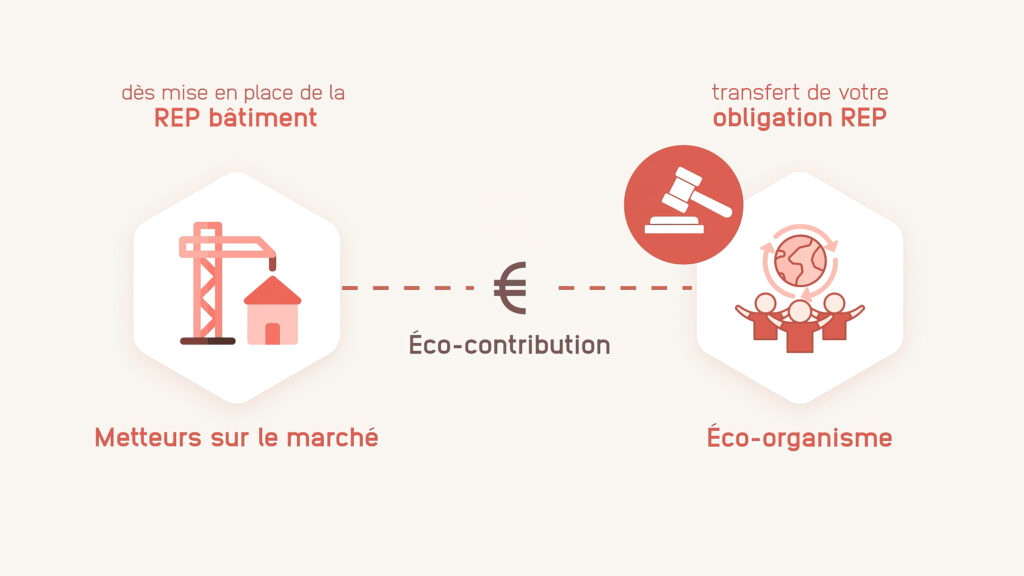L’éco-contribution :
collective financing of the circular economy
Qu’est-ce que l’éco-contribution ?
EPR (Extended Producer Responsibility) considers producers to be responsible for taking into account their products at the end of their life, whether in terms of their collection, recycling and treatment.
Marketers can choose to delegate this obligation to a non-profit eco-organization approved by the public authorities, through the payment of an eco-tax. The eco-organization will thus take on their EPR obligations on their behalf. The advantage of going through an eco-organization is that it pools the financing of the recycling sector: the eco-organization will centralize the eco-contributions of all its members. With its entrepreneurial approach and its expertise in both the business and recycling, the eco-organization will optimize the processing costs of the sector. Through economies of scale, it will also rationalize its operating costs, enabling its members to comply at the lowest cost.

The alternative, for the producers on the market, remains that of discharging this obligation individually, by setting up their own collection, sorting, and recovery of their waste.
Quel modèle économique pour un éco-organisme ?
In order to operate and implement the actions inherent to the objectives of EPR, the eco-organization needs to be financed. Among its revenues, it can count on the sales of secondary raw materials, which come from the waste collected, sorted and treated. However, the eco-organization's expenses related to the logistical costs of collection and processing are not fully covered by the revenue from secondary raw materials. This is where the eco-contribution comes into play: by paying their contribution, producers can offset all expenses and provide the balance necessary for the operation of the eco-organization.
What is the scale for Building EPR?
Each year, a scale is issued by each eco-organization, for each person or entity subject to EPR. Discover the Valobat eco-contribution scale. It takes into account, among other things, the materials concerned, their specific volumes and units of measurement, their recycling criteria, etc. but also the profiles and constraints of the marketers concerned.


